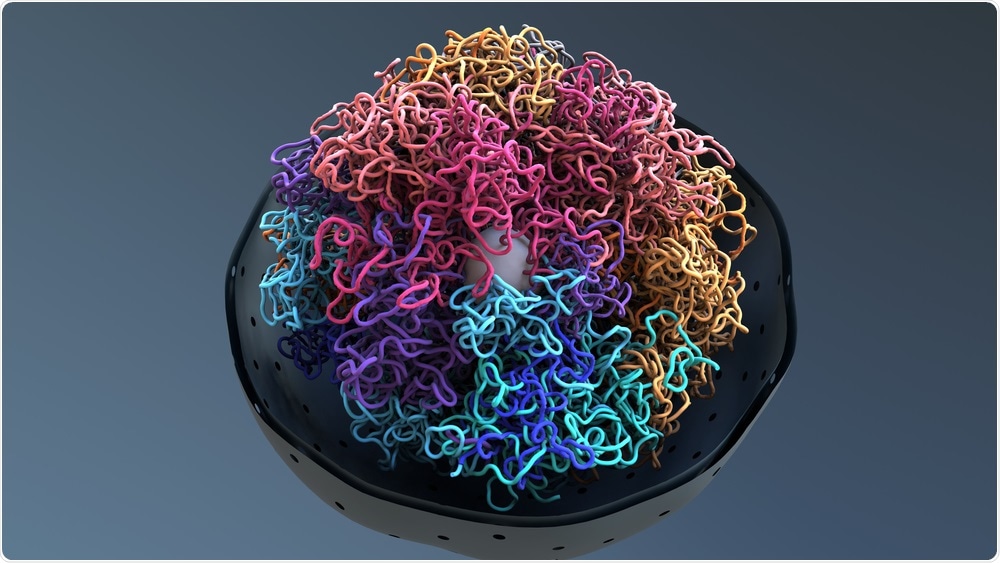Histones play an important role in the cell nucleus by packaging DNA into chromatin. But histones are very sticky to both RNA and DNA and, hence, they are protected by complexes of histone chaperones to make sure that they are delivered to the cell nucleus following synthesis and attach to the right part of DNA to assemble the chromatin.

DNA in Nucleus. Image Credit: Design_Cells/Shutterstock.com
Histone chaperones are essentially proteins that attach to histones to shield them from non-specific binding events before they reach their destination. But at times, this process fails and histones get stuck during their transportation to chromatin for no apparent reason.
In a research work published in the Molecular Cell journal, scientists have demonstrated that the protein DNAJC9 plays a significant role in protecting the histones and thus the chromatin.
Active fixer joins passive bystanders
Until now researchers have assumed that histone chaperones only act to passively shield histones. We have found out that DNAJC9 actively engages the cellular protein folding machinery—which means it actively recruits enzymes and molecular chaperones to redeploy histones that have been trapped.”
Colin Hammond, Study Lead and Assistant Professor, University of Copenhagen
Hammond is also a part of the Protein Memory Program in the Novo Nordisk Foundation Center for Protein Research at the University of Copenhagen.
When histones are released from their confined state, they can re-engage the histone chaperones, similar to MCM2, and can be arranged into nucleosomes to organize chromatin. When the DNAJC9 protein is mutated, it loses its potential to recruit the protein folding machinery. This causes the histones to remain trapped and is thus lost for the proper deposition of chromatin.
This means that traditional histone chaperones cannot fully protect histone proteins from spurious interactions. Rather, the cell is dependent on the combined action of molecular chaperones and histone chaperones to safeguard these fundamentally important proteins during their dynamic lives.”
Colin Hammond, Study Lead and Assistant Professor, University of Copenhagen
Strong collaboration necessary
The analysis is the outcome of a robust international collaboration. The structural discoveries of the DNAJC9 protein were made by the study co-first author Hongyu Bao in Hongda Huang’s laboratory and other associates from the Southern University of Science and Technology in China, and Dinshaw Patel from Memorial Sloan Kettering Cancer Center.
Colin Hammond led the functional analysis by working closely with collaborators Ivo Hendriks and Michael Lund Nielsen from CPR’s Proteomics Program to dissect the protein function through comprehensive proteomic assays.
Relevant insights for cancer research
DNAJC9 is a crucial protein in several types of cancer cells and its concentrations correlate with the rate at which tumor cells proliferate. In cancer cells, chromatin could be more dependent on the DNAJC9 protein than normal cells, and if this is the case, DNAJC9 can be a potential target for developing upcoming cancer therapies.
Although it's still early days, we hope this fundamental advance in our understanding of DNAJC9 biology helps to pinpoint a function essential for cancer cell viability with therapeutic potential.”
Colin Hammond, Study Lead and Assistant Professor, University of Copenhagen
Source:
Journal reference:
Hammond, C. M., et al. (2021) DNAJC9 integrates heat shock molecular chaperones into the histone chaperone network. Molecular Cell. doi.org/10.1016/j.molcel.2021.03.041.